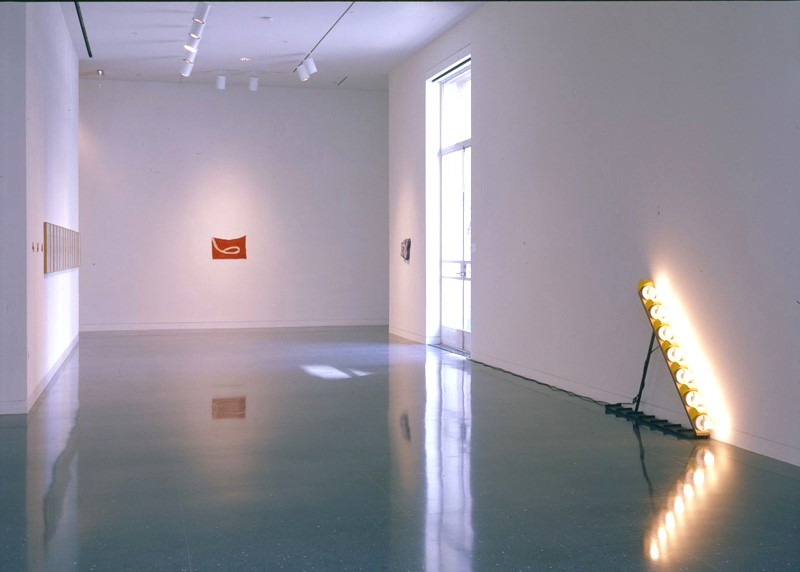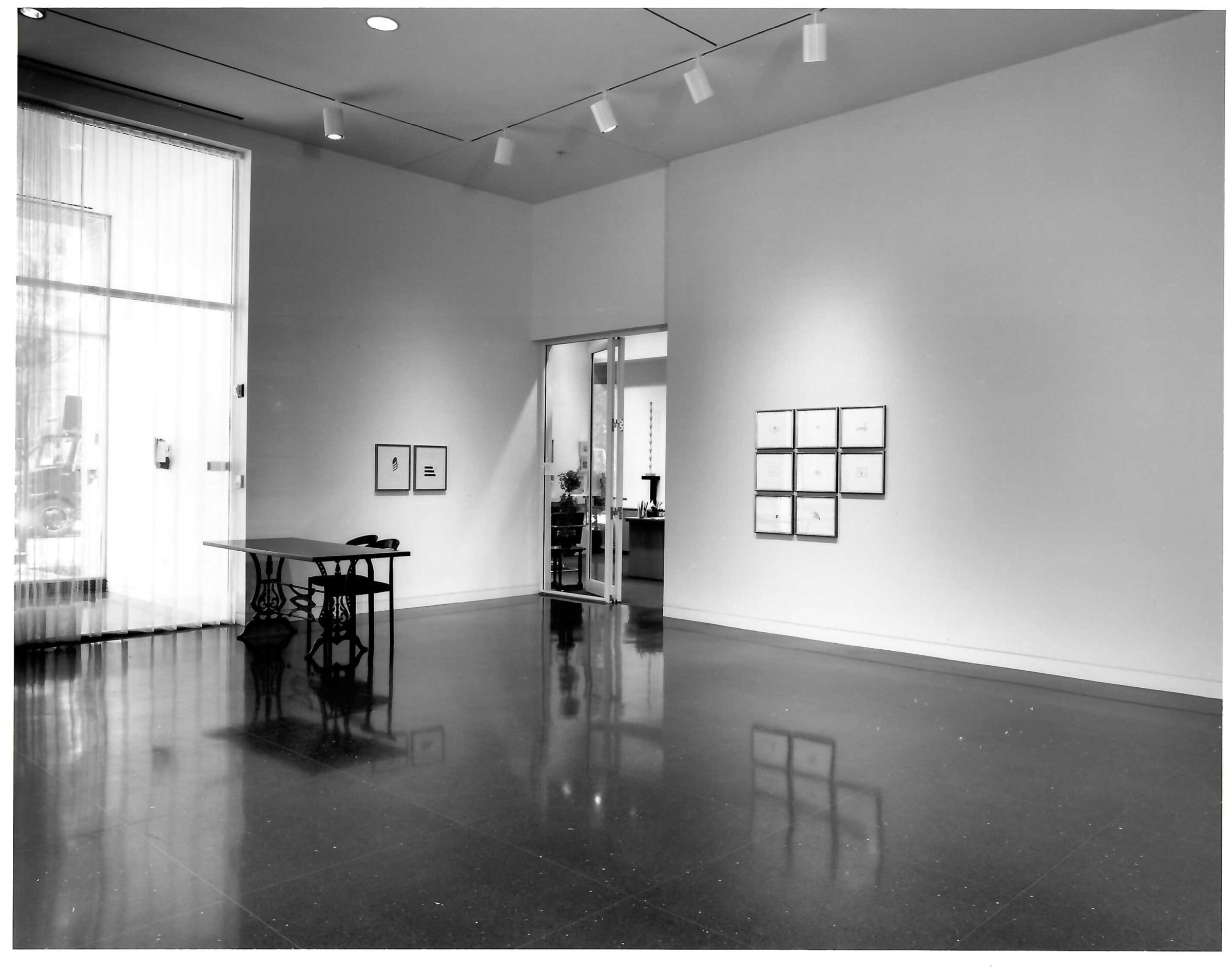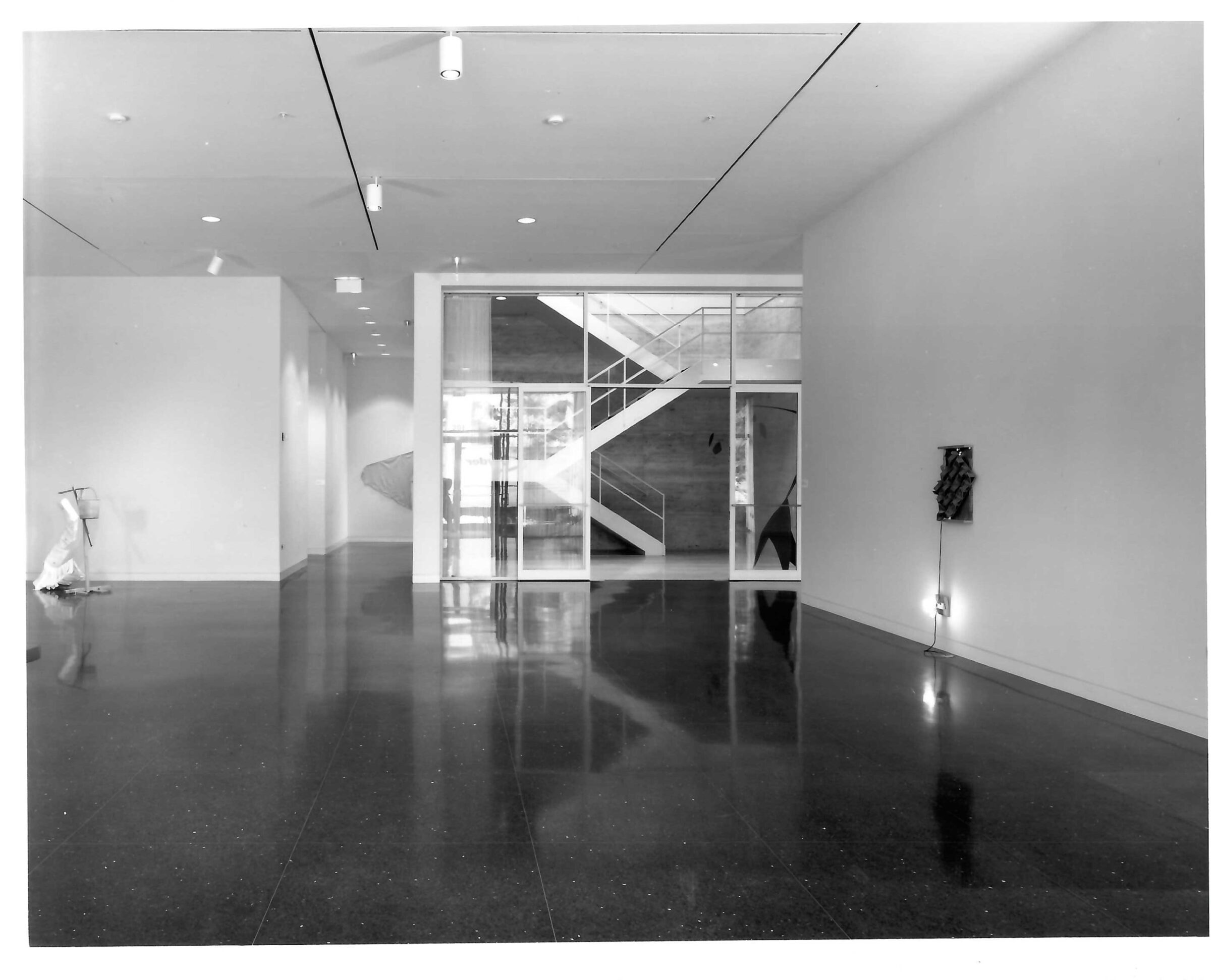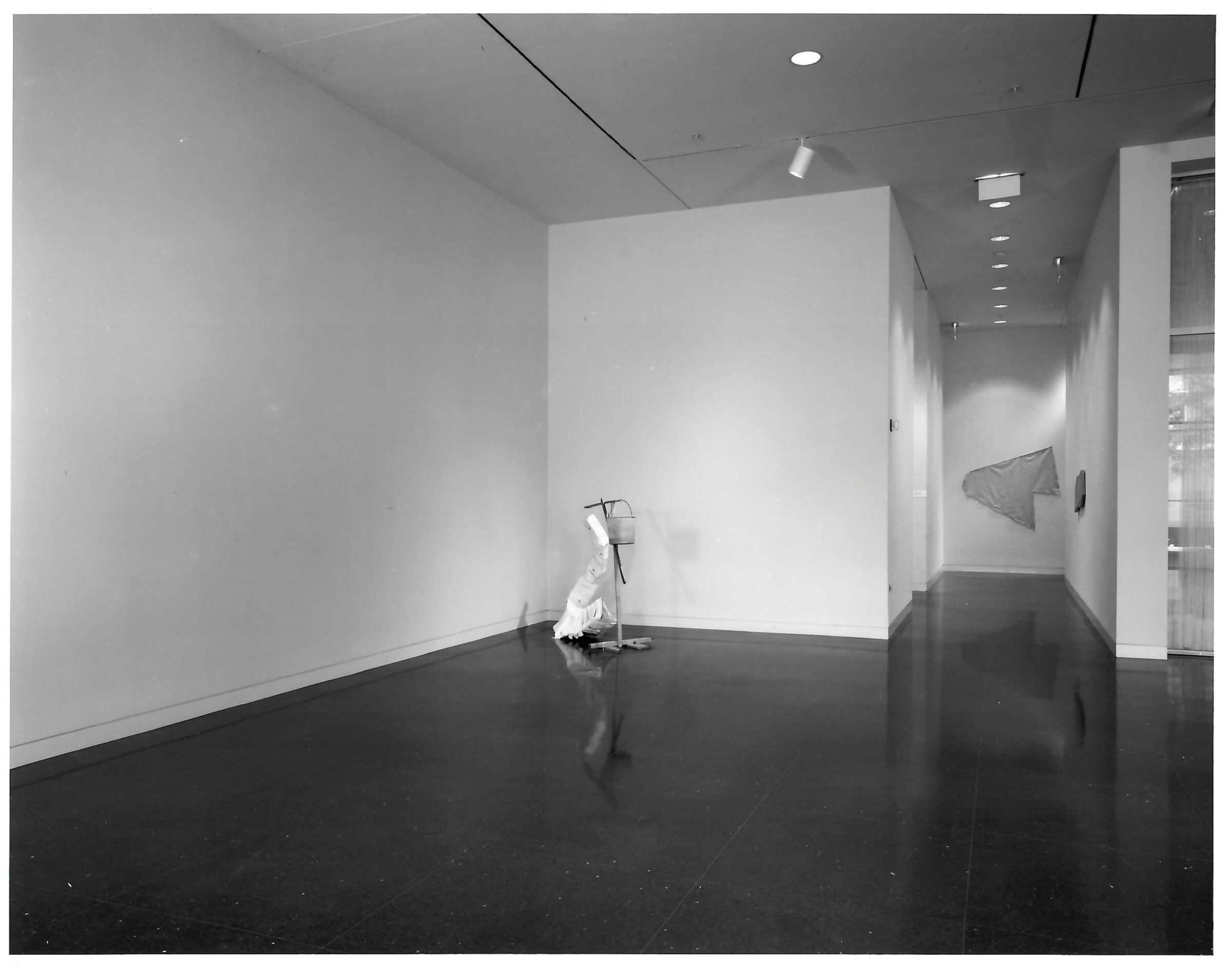Richard TuttleCommunity


Past exhibition
Richard Tuttle Community
About the Exhibition
The Arts Club of Chicago is pleased to announce the opening of Community, an exhibition of Richard Tuttle’s work, on Friday, April 16. Richard Tuttle conceived of this exhibition during a visit to The Arts Club where he observed the community of artists, collectors, and critics in relation to the institution. He invited sixteen long-time collectors to select one of his pieces from their collection for this exhibition, bringing together pieces from a diverse group of people united by their shared aesthetic interest in the artist’s work. The exhibition will run through June 18 and the artist will be present at the April 16 opening from 4:00 to 6:00 p.m.
On exhibition are pieces from collectors in Germany, Switzerland, New York, and Chicago. The nineteen pieces which span Richard Tuttle’s career include: an unbleached calico work from the mid-1960s; two wire pieces from the early 1970s; a floor drawing of the late 1980s; two light works from 1989 and 1991; works on paper from 1974, 1987, and 1990; and three recently completed pieces from 1998 and 1999. Wire Octagon (#4) (1971) and 20th Wire Piece (1972) best illustrate Richard Tuttle’s use of simple materials. He describes how the “wire octagon” pieces are installed:
They use templates which tell where the small nails are placed. After the template is removed, the nails are connected with thin wire before being driven inward. Wire produce[s] a shadow. Though the small nails pin the wire to the wall, the rhythmic shadow frees them. The wire is supposed to be loosened until the hint of gravity shows allowing a razor sharp edge, which is sculptural.
In the 20th Wire Piece, pencil lines drawn on the wall are traced with wire and secured by nails. The shadow created by the wire adds dimensionality and both the wire and the pencil lines refer to Tuttle’s wide definition of what constitutes drawing. Tuttle states the wire pieces “must be made new each time and, like frescos, they can’t be moved.”
The floor drawing, There’s No Reason a Good Man is Hard to Find III (1988), is the largest and most materially complex piece in the exhibit. The integration and confounding of drawing and sculpture is a dominant characteristic of Tuttle’s work and readily seen in his “floor drawing” series. In the catalogue for the 1991 Institute of Contemporary Art exhibition in Amsterdam, Tuttle states:
Drawing is an idea of sculpture; it’s as much as an idea as sculpture would have with three dimensions. It is curious people think sculpture is limited in idea (over 2-dimensionality) perhaps because idea is not physical and sculpture is. That’s why I like taking the two-dimensional, subordinating it to sculpture, and equalizing the idea-value, to dream of sculpture far richer in idea value, though gotten through drawing, than drawing!
There’s No Reason a Good Man is Hard to Find III is a wooden structure with a bucket of water balanced on one end of the top horizontal strip of wood that is counterbalanced by a plastered chicken wire form, covered with blue figures, that spirals down to the floor. The roughness of the materials makes the piece appear off-hand, the water in the bucket reflects the void of the ceiling, and the repeated figures reference movement.
Richard Tuttle’s work challenges the viewer to be attentive to subtlety and nuance. His work is the materialization of states of being, moments of change, and memories. It is direct in its content and intent, yet elusive, spontaneous, and pragmatic. He employs common materials such as wire, plaster, canvas, plywood, Styrofoam, chicken wire, light bulbs, and paper. The materials do not hold specific meaning. Tuttle speaks of his desire to make something look like itself, to keep a thing real. In the catalogue for Tuttle’s 1975 exhibition at New York’s Whitney Museum of Art, curator Marcia Tucker writes, “it is clear that Tuttle’s work, in order to be seen at all, focuses the viewer’s attention in a particular way, forcing a concentration that alters one’s vision not only of the pieces, but of everything around them as well, even to the extent of compelling one to pay attention to the very act of paying attention.”
About the Artist
Richard Tuttle was born in 1941 in Rahway, New Jersey, and studied at Trinity College in Hartford, Connecticut. His first solo exhibition was in 1965 at Betty Parsons Gallery where he continued to exhibit until the early 1980s. He has had numerous solo exhibitions in galleries and museums throughout the world in such venues as the Dallas Museum of Fine Arts (1971); Museum of Modern Art, New York (1972); Whitney Museum of American Art (1975); Kunsthalle Basel (1977); Museum van Hedendaagse Kunst, Gent (1977); Stedelijk Museum, Amsterdam (1978); Institute of Contemporary Art, London (1985); CAPC Musee d’art contemporain de Bordeaux (1985); Sprengel Museum, Hannover (1990); Institute of Contemporary Art, Amsterdam (1991); Instituto Valenciano de Art Moderno, Valencia, Spain (1992); Museum of New Mexico and Museum of Fine Arts in Sante Fe (1995); Sezon Museum of Art, Tokyo (1995); Camden Arts Centre, London (1996); California State Long Beach Art Museum (1997); Kunsthalle Zug, Switzerland (1996 and 1997); The Fabric Workshop, Philadelphia (1998); and the Modern Art Museum of Fort Worth (1998).
Over the course of his career Richard Tuttle has received many awards including The Aachen Art Prize, Ludwig Forum für Internationale Kunst, Germany (1998); Skowhegan Medal for Sculpture, New York (1998); the 74th American Exhibition, Art Institute of Chicago Biennial Prize (1982); a National Endowment for the Arts Award (1968); and the C. Douglas Dillon Foundation Award (1965).
Richard Tuttle co-designed the exhibition catalogue, which has a hand-made cover and requires assembly by the reader. The text includes Tuttle’s commentary on each of the pieces as well as excerpts from earlier books and catalogues. The catalogue will be available for purchase.
In conjunction with his exhibitions, and in collaboration with other artists, Richard Tuttle has produced over thirty artist books in small editions. He produced his first book, Richard Tuttle: Story with Seven Characters, in 1965 and has made books in collaboration with poets Larry Fagin (1977), Mei-Mei Berssenbrugge (1988), Barbara Guest (1991), and most recently Reading Red: Richard Tuttle and Charles Berstein (1998).


